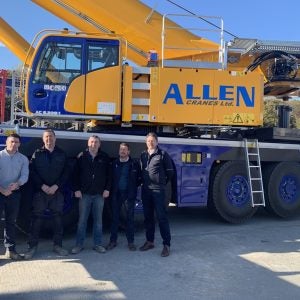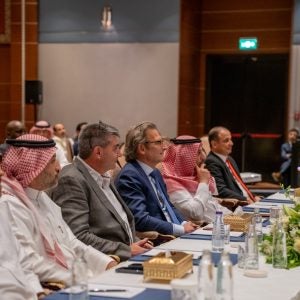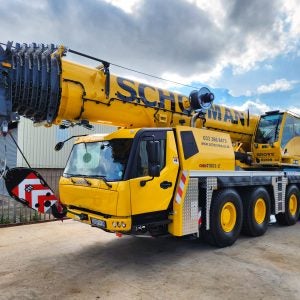DeFeo said, “We are quickly reaching the saturation point for expense and return with trade shows globally. Terex believes there should be three major global shows, alternating between Asia, Europe and the Americas. Shows are best owned by associations, where the revenue generated will be used to support the overall interests of the industry. Bauma China is a good show but does not meet these criteria.”
Chief marketing officer Katia Facchetti has said she is ‘appalled’ by the number of construction trade shows.
Facchetti was appointed to the newly-created post of chief marketing officer at Terex in 2006 from outside the construction industry.
She told Cranes Today, “There are too many shows. This is an industry with a long development cycle. The equipment doesn’t change from month to month. There are not enough new products to justify the frequency of the shows; the audience for many of these shows overlaps too much. There are some smaller shows with a specialist focus that work. However, for the massive cross industry shows, one per continent would be the best use of resources.”
Facchetti and DeFeo favour association-backed events, such as ConExpo. Facchetti said, “Having an industry association like AEM involved in running a trade show means that what profits are made on the show go to programmes that benefit our industry in meaningful ways.”
Facchetti didn’t just criticise Bauma’s Chinese project, where it is competing directly with ConExpo, but also attacked the structure of the main show in Munich, and called for the European show to work with an industry association to channel profits back into the construction industry, or be replaced with a new event.
Eugen Egetenmeir, deputy managing director of Bauma organiser Messe München hit back at calls for Bauma China to hand a share of profits from its show over to a trade association. Egetenmeir said, “Kickback models play a subordinate role if the show doesn’t generate new business contacts,” and accused other shows, such as ConExpo Asia, of ‘jumping on the bandwagon.’
Egetenmeir argues that it’s the overall benefit of the show to exhibitors that should be judged: “The exhibitor always pays very careful attention to which event gives him the best return on investment. Kickback models to industry play a subordinate role if the show doesn’t generate for the exhibitors those all-important new business contacts. The fact that Bauma China 2008 was already fully booked by its deadline—and indeed now has a waiting list—shows us as the organisers that we have the right concept for this event and that the Chinese and foreign exhibitors have great confidence in it.
Egetenmeir agreed that there are too many shows. “Bauma China was the first show in this sector to be put on by a foreign organiser in the Chinese trade fair market; it was organised in close cooperation with the organiser of Bices and scheduled to alternate with existing events in China. It is now by far the most successful trade fair for construction machinery and building material machinery in Asia. Other organisers have also been trying for some years now to jump on the bandwagon, and put on their events.”
“Its success is due to synergies from the leading trade fair Bauma in Munich, to the choice of Shanghai as a venue, and to the Shanghai New International Exhibition Centre and its infrastructure. No other exhibition venue in Asia can boast exhibition halls and an open-air site that were designed and built from the start to match the requirements of a construction machinery show. This was not simply by coincidence: the organiser of Bauma in Munich and Bauma China in Shanghai is a joint venture partner in the Shanghai exhibition centre and paid attention that the venue complies with the specific requirements of a machinery show.






